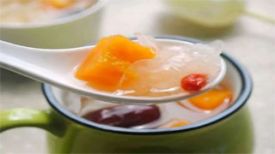
People over 50 are most afraid of having poor blood vessels, so they are determined to change their daily diet in order to drive away the "number one garbage" in their blood vessels - cholesterol!
Some people start to reject foods with high cholesterol content such as pig brain and animal organs, and even eat very little meat, instead pursuing a light diet. In fact, some oil absorbing vegetables can raise cholesterol faster than eating meat! Vegetables like beans, eggplants, etc., accidentally use a lot of oil in order to taste betterOf course, these dishes are not inedible, but you should pay attention to the amount when eating them. Today, the editor will introduce a food that can be called a "cholesterol cleaner", which is the peas that are currently on the market in large quantities!
Eating peas during the summer vacation brings many benefits
Peas may not grow prominently, but their vitamin B1 content is more than ten times that of soybeans! It also contains abundant dietary fiber. A study published in The Lancet suggests that dietary fiber intake is associated with human longevity.
This study shows that daily intake of 25-29 grams of dietary fiber can reduce all-cause mortality, cardiovascular and cerebrovascular disease related mortality and incidence rate of many chronic diseases, including diabetes, and is conducive to longevity!
In short, eating peas twice a week can meet this quantity requirement!
1. Stable three highs, protecting blood vessels
Peas have the "three highs", which are high levels of potassium, dietary fiber, and calcium. Peas rank among the top 10 common vegetables in terms of potassium content, and moderate consumption can also have certain benefits in stabilizing blood pressure and protecting cardiovascular health.
And its rich dietary fiber can reduce the absorption and accumulation of fat during digestion, delaying the rise of postprandial blood sugar.
Not only that, the content of phytosterols in peas is higher than that in general vegetables, which can be called the "nemesis" of cholesterol and can inhibit and reduce cholesterol absorption and synthesis.
2. Clearing the intestines and promoting bowel movements
The dietary fiber content in peas ranks eighth among vegetables, which is 1.2 times that of chives! Rich dietary fiber helps promote intestinal peristalsis and prevent the occurrence of constipation.
3. Brain strengthening and dementia prevention
Peas contain a large amount of folic acid, and even a small one is higher than leeks!
Folic acid is not only suitable for pregnant women to eat, but also for middle-aged and elderly people to supplement. It can effectively prevent senile dementia and anemia, enhance memory, and promote brain function.
4. Sleep aid and immune boosting
Fresh peas contain 7.4 grams of protein per 100 grams, which is equivalent to the nutritional value of the same amount of tofu. It can help enhance the body's ability to resist and prevent diseases, and is also beneficial for postoperative recovery.
The vitamin C in peas also ranks first among all fresh beans. It can promote the synthesis of neurotransmitters and improve sleep quality.
And its potassium element can maintain the excitability and self-discipline of the human heart muscle; Peas have over 10 times more vitamin B1 than soybeans. Eating them regularly can improve mood, eliminate fatigue, and help alleviate anxiety and insomnia.
5. Bright Eyes and Beauty
Peas contain a large amount of carotene and lutein, which are important substances for protecting vision. For middle-aged and elderly friends with dry eyes, fatigue, and blurred vision, they can eat more peas.
Moreover, peas contain abundant vitamin A, which can be converted into vitamin A in the body, and have moisturizing, wrinkle preventing, and beauty enhancing effects.
The Compendium of Materia Medica also records that peas can "remove facial black spots and make the face shiny.".
This combination is nutritious and delicious
Peas contain relatively low levels of calcium and phosphorus in legume foods, so it is recommended to pair them with high calcium ingredients when cooking, such as soy products, small rapeseed, small cabbage, eggs, seaweed, and black fungus, which are all good choices.
Of course, peas have a high protein content and are a perfect combination with meat.
1. Meat foam peas
Ingredients: lean meat, peas, light soy sauce, salt, and cornstarch
Method:
*Cut lean meat into small pieces, add light soy sauce and flour, stir well and set aside; Peel out fresh peas and set aside.
*Add oil to the pot, heat over high heat, then pour in diced meat and stir fry for 30 seconds before serving.
*Pour in the base oil and stir fry the peas for a while. Add a little water and bring to a boil. Turn to medium heat and simmer for about 5 minutes until the beans are soft.
*Cook the broth slightly, add the saut é d diced meat and an appropriate amount of salt, stir well, and then remove from the pot.
2. Peas+rice. Stir frying it with rice can complement each other and improve the nutritional value and utilization of protein.
Fried Rice with Peas
Ingredients: rice, eggs, diced ham, diced carrots, corn kernels, peas, diced cucumber, oyster sauce, sweet sauce, salt
Method:
*Add eggs and white vinegar to the rice and stir well.
*Add less oil to the pot, then stir fry the rice over low heat until scattered.
*Add diced ham, diced carrots, corn kernels, and peas and stir fry evenly.
*Turn to high heat, add oyster sauce, sweet noodle sauce, and salt to season, and finally add diced cucumber and scallions to serve.
3. Peas+mushrooms. Because the calcium and phosphorus content of peas is relatively low in legume foods, pairing them with high calcium foods can provide more balanced and comprehensive nutrition, which is more beneficial for physical health.
Stir fried dried tofu with mushrooms and peas
Ingredients: peas, mushrooms, dried tofu, carrots, peppers, soy sauce
Method:
*Dice mushrooms, dried tofu and carrots.
*Boil water in a pot, then boil the peas, diced carrots, and diced shiitake mushrooms until they are cooked by 7 minutes each. Remove from the pot.
*Heat up the oil in a hot pot and add chopped garlic and red chili peppers until fragrant.
*Then add dried tofu and stir fry until it changes color, then pour in peas, carrots, and diced shiitake mushrooms and stir fry evenly. Finally, add light soy sauce and salt to season, drizzle with a little sesame oil to enhance the aroma, and then remove from the pot.
Peas can also produce delicious pea seedlings. You just need to buy pea seedlings and soak them in water overnight. Spray a kitchen tissue on top of the seedling box, put the seeds on top, cover them with damp gauze, and remove the gauze to see light after the seeds sprout; Spray water every day, grow to about 10 centimeters, and you can eat it.
Pea seedlings can be eaten several times, and a portion of the roots and buds can be retained during harvesting for further growth.
Pea seedlings have beneficial effects in reducing swelling, promoting spleen health, promoting fluid production, and quenching thirst, making them very suitable for consumption by patients with hypertension, hyperlipidemia, and hyperlipidemia.
Warm mixed pea seedlings
Ingredients: Pea sprouts, minced garlic, scallions, vinegar, soy sauce, sesame oil, sugar
Method: Put less oil in the pot, stir fry minced garlic and scallions until fragrant, then add vinegar, salt, sugar, light soy sauce, and sesame oil to make a warm sauce. Drizzle over the pea sprouts.
Pay attention to these things
1. How to choose and store peas
Generally speaking, fresh and high-quality peas have a plump shell and a color of turquoise or dark green; If the color of the pods is lighter and the greenness is lighter, it indicates that the peas are relatively old.
You can also pinch the shell of the pea with your hand. If it rustles, it can also prove that the pea is fresh enough.
If you buy directly peeled peas, you can also judge their quality by pinching them by hand: fresh peas usually cannot be pinched open; However, the texture of old peas is relatively harder, and when pinched with your hand, they will clearly turn into two petals.
Storage method: Peeled peas (do not wash with water as they are prone to rotting) can be directly placed in a fresh-keeping bag. After sealing, they should be laid flat neatly, sealed and frozen, and can be eaten for six months without any problems~
When you want to eat, take it out and let it thaw naturally at room temperature. It should take about 5 minutes to consume.
2. These people eat less peas
As a kind of beans, whether fresh peas, dried peas or pea seedlings, the purine content is relatively high. Gout and hyperuricemia patients should eat less.
In addition, although peas have a low fat content, their carbohydrate content is particularly high, even comparable to rice, so it is not advisable to consume them in large quantities. If you eat too much, you should reduce the intake of other staple foods in moderation.


